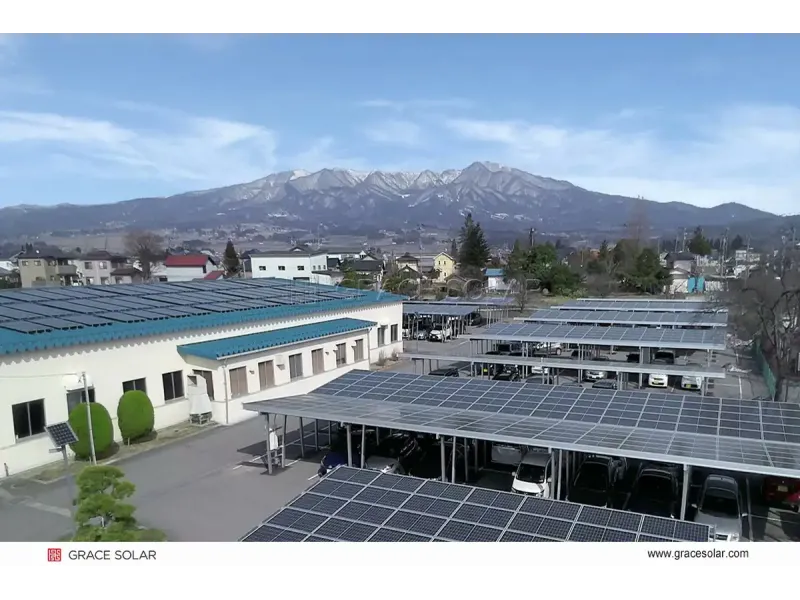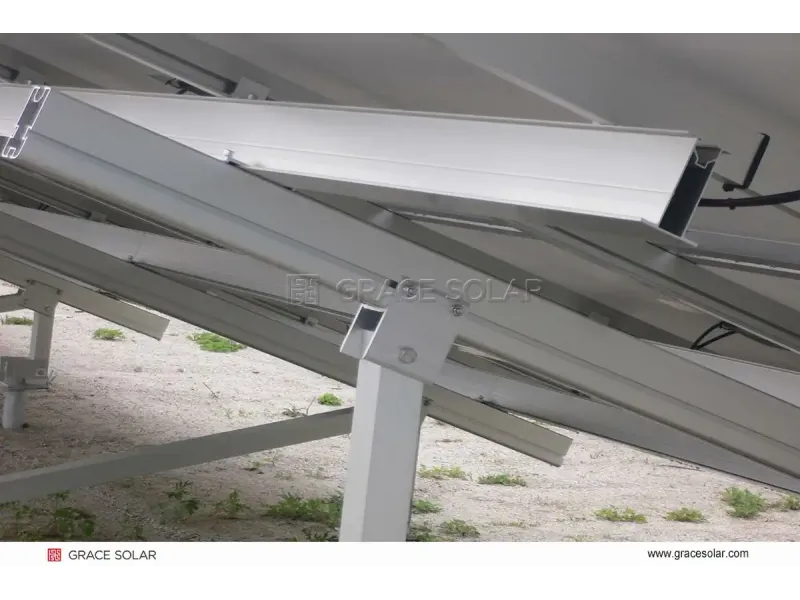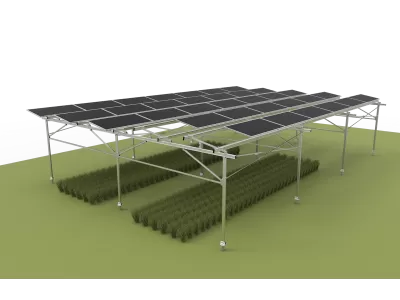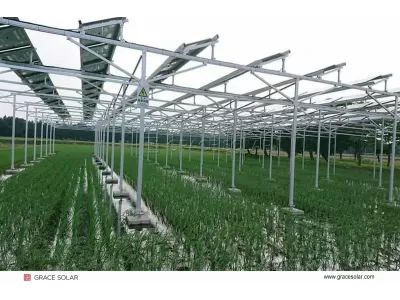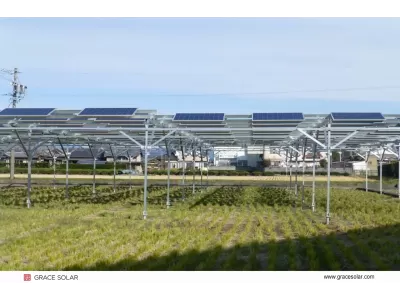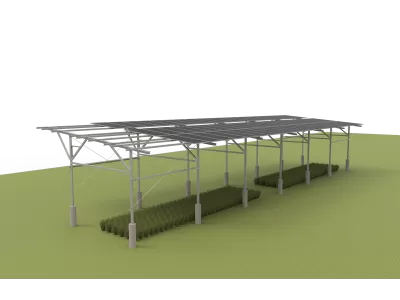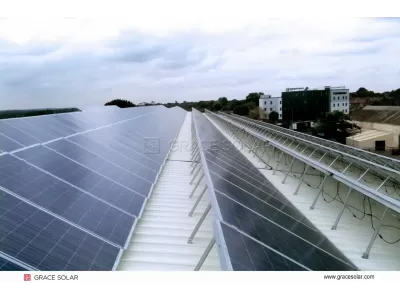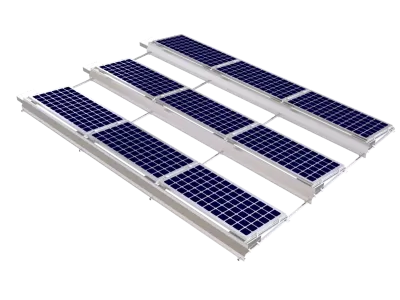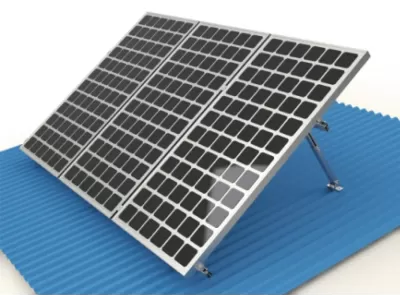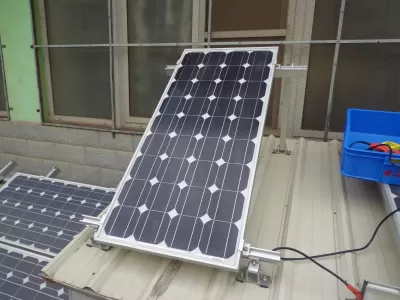
Table of Contents
As the world seeks sustainable energy solutions, solar power has emerged as the definitive answer to global energy challenges. With the sun providing enough energy in one hour to power the entire world for a year, solar technology represents humanity's most promising path toward clean, affordable, and reliable energy independence. The International Energy Agency confirms that solar energy has become the cheapest source of electricity in history for many parts of the world, marking a pivotal moment in our global energy transition.
The solar energy answer isn't just about generating electricity—it's about creating a sustainable ecosystem that includes advanced mounting systems, energy storage solutions, smart grid integration, and innovative business models that make clean energy accessible to everyone, from individual homeowners to massive utility-scale projects.
Understanding Solar Energy Fundamentals
What Exactly is Solar Energy?
Solar energy is the radiant light and heat harnessed from the sun through various technologies. According to Wikipedia, it's "an essential source of renewable energy" that can be captured through both active techniques like photovoltaics and passive methods including strategic architectural design. The sun produces energy through nuclear fusion, where hydrogen atoms combine under extreme pressure and temperature to form helium, releasing tremendous amounts of energy in the process.
This energy travels 93 million miles to Earth in approximately 8 minutes, arriving as electromagnetic radiation across various wavelengths. Only about 47% of this radiation actually reaches the Earth's surface, with the rest being reflected back to space or absorbed by the atmosphere. Yet this fraction provides more than enough energy to meet all of humanity's power needs thousands of times over.
The Science Behind Solar Power
The process begins with nuclear fusion in the sun's core, where hydrogen atoms fuse to create helium, releasing enormous amounts of energy. This energy travels to Earth as electromagnetic radiation, with photovoltaic cells converting sunlight directly into electricity through the photovoltaic effect discovered by French physicist Edmond Becquerel in 1839.
Modern solar cells typically use silicon semiconductors that create an electric field when exposed to sunlight. When photons from sunlight strike these semiconductors, they transfer their energy to electrons, knocking them loose from their atoms. This creates a flow of electrons—electric current—that can be captured and used to power our homes, businesses, and communities. The efficiency of this conversion process has improved dramatically, from less than 4% in the 1950s to over 22% for commercial panels today, with laboratory cells reaching nearly 50% efficiency.
Major Solar Technologies Explained
Photovoltaic (PV) Systems
Photovoltaic technology, which converts sunlight directly into electricity using semiconductors like silicon, has become the most widely deployed solar solution. As the U.S. Department of Energy explains, when sunlight hits PV cells, it creates electrical charges that generate direct current, which is then converted to alternating current for practical use. PV systems can be categorized into three main types: monocrystalline (highest efficiency), polycrystalline (good value), and thin-film (most flexible).
The scalability of PV systems makes them incredibly versatile. From small rooftop installations of a few kilowatts powering individual homes to utility-scale solar farms generating hundreds of megawatts, photovoltaic technology adapts to virtually any energy need. Recent advancements in bifacial panels, which capture sunlight from both sides, and perovskite solar cells promise even greater efficiencies and lower costs in the coming years.
Concentrated Solar Power (CSP)
CSP systems use mirrors to concentrate solar radiation onto receivers, heating transfer fluids to power traditional steam turbines. This technology is particularly effective for utility-scale power generation and can incorporate thermal storage to provide electricity after sunset. There are four main CSP technologies: parabolic troughs, solar power towers, linear Fresnel reflectors, and parabolic dishes.
What makes CSP particularly valuable is its inherent energy storage capability. By using molten salt or other thermal storage mediums, CSP plants can continue generating electricity for up to 10-15 hours after sunset, providing reliable baseload power that complements intermittent renewable sources. This dispatchability makes CSP an essential component of a fully renewable grid.
Solar Heating & Cooling
Solar thermal technologies capture the sun's heat for water heating, space conditioning, and industrial processes. These systems provide efficient thermal energy while reducing reliance on conventional heating fuels. Solar water heating systems typically use collectors mounted on roofs that absorb solar radiation and transfer the heat to water or an antifreeze solution.
For commercial and industrial applications, solar process heat systems can provide temperatures up to 400°C for various manufacturing processes, significantly reducing fossil fuel consumption. Solar cooling uses thermal energy to drive absorption chillers, providing air conditioning without electricity-intensive compressors—an ideal solution for sunny climates where cooling demand peaks with solar availability.
Global Impact & Market Growth
Explosive Worldwide Adoption
Solar energy has experienced remarkable growth, with the Solar Energy Industries Association reporting average annual growth rates of 25% over the past decade. The International Energy Agency notes that solar has become the fastest-growing energy source globally, with 2023 seeing solar additions outpacing coal power by two to one. In 2024 alone, the world added over 440 GW of new solar capacity—more than the entire solar fleet that existed just a decade ago.
China leads the world in solar installation, accounting for nearly 60% of new global capacity, followed by the United States, European Union, and India. Emerging markets in Southeast Asia, Latin America, and Africa are also experiencing rapid growth as solar costs continue to decline. The global solar market is projected to reach $500 billion by 2030, with cumulative installations expected to exceed 5,000 GW—enough to power approximately 20% of global electricity demand.
Environmental Benefits
As a clean energy source, solar power creates no greenhouse gas emissions during operation and uses minimal water compared to conventional power generation. The United Nations emphasizes that transitioning to renewables like solar is crucial for addressing climate change and achieving sustainable development goals. A typical residential solar system can offset 3-4 tons of carbon emissions annually—equivalent to planting over 100 trees each year.
Beyond carbon reduction, solar energy significantly improves air quality by reducing emissions of sulfur dioxide, nitrogen oxides, and particulate matter that cause respiratory illnesses and environmental damage. Solar farms can also be designed to support biodiversity through pollinator-friendly vegetation and dual-use agricultural systems that combine food production with energy generation.
Economic Benefits & Cost Analysis
Dramatic Cost Reductions
The solar industry has achieved stunning cost reductions, with photovoltaic module prices falling by over 90% since 2009. According to NREL, solar is now cost-competitive with conventional energy sources in most markets, making it not just an environmental choice but an economic one. The levelized cost of electricity from utility-scale solar has dropped below $0.05 per kWh in optimal locations—cheaper than new fossil fuel plants in most parts of the world.
These cost reductions stem from multiple factors: manufacturing scale, technological improvements, supply chain optimization, and experience curve effects. Solar panel efficiency has increased while production costs have decreased, creating a virtuous cycle that continues to drive adoption. Balance of system costs—including mounting structures, inverters, and installation labor—have also seen significant reductions through standardization and innovation.
Job Creation & Economic Development
The solar sector has become a major employment driver, creating hundreds of thousands of jobs worldwide in manufacturing, installation, maintenance, and research. This growth supports local economies while building a skilled clean energy workforce. In the United States alone, solar employment has grown 150% over the past decade, with over 250,000 workers across all 50 states.
Solar development also generates significant local economic benefits through tax revenues, land lease payments to farmers and landowners, and reduced energy costs for businesses and households. Communities hosting solar projects often see increased investment in infrastructure and public services, creating a positive feedback loop that supports further economic development.
Grace Solar Implementation Solutions
Global Expertise & Proven Track Record
As a leader in solar mounting systems, Grace Solar brings extensive global experience to the solar energy equation. Ranking among the top 5 in global market share and number 1 in the Japanese market, our cumulative installed capacity of 48GW demonstrates our capability to deliver reliable solar solutions worldwide. With 650 dedicated staff members and a 110,000m² factory facility, we have the scale and expertise to handle projects of any size and complexity.
Our global presence spans more than 100 countries, with successful MW-scale projects completed in diverse environments from the deserts of the Middle East to the snowy mountains of Europe and the tropical climates of Southeast Asia. This geographical diversity has equipped us with unique insights into addressing location-specific challenges, whether it's designing for high wind loads, seismic activity, extreme temperatures, or corrosive coastal environments.
Innovative Product Portfolio
Our comprehensive solar solutions include the GS-Light intelligent tracking system, GS-Smart ground mounting system, and GS-Energy roof mounting system. These technologies incorporate AI, IoT, and advanced engineering to maximize energy production and system reliability. The GS-Light tracker, for instance, uses predictive algorithms and real-time weather data to optimize panel orientation, increasing energy yield by up to 25% compared to fixed-tilt systems.
Our product development philosophy centers on three key principles: durability, efficiency, and ease of installation. All our mounting systems are designed with quick-connect components and pre-assembled parts that reduce installation time by up to 30% while maintaining structural integrity. We've pioneered several proprietary connection technologies that eliminate the need for specialized tools or welding equipment, making our systems accessible to installers worldwide.
Quality & Certification Assurance
With over 100 patents and international certifications including UL, TUV, CE, and JIS, Grace Solar maintains the highest quality standards. Our 2000m² experiment center and team of experienced engineers ensure that every installation meets rigorous performance and safety requirements. All our products undergo extensive testing, including wind tunnel simulations, corrosion resistance tests, and structural load calculations that exceed local building code requirements.
We've established long-term strategic partnerships with global Fortune 500 companies, a testament to our reliability and product quality. Our bankability reports provide financial institutions with the confidence to fund projects using our systems, while our comprehensive warranties (typically 25+ years for structural components) give project developers and owners peace of mind for the long operational life of their solar assets.
Solar Installation Process
Site Assessment & System Design
The solar installation journey begins with a comprehensive site assessment that evaluates multiple factors: solar resource availability, shading analysis, structural integrity of mounting surfaces, electrical infrastructure compatibility, and local regulatory requirements. Using advanced software tools and on-site measurements, engineers create optimized system designs that maximize energy production while ensuring safety and compliance.
For commercial and utility-scale projects, this phase includes detailed feasibility studies, financial modeling, and environmental impact assessments. The design process also considers future expansion possibilities, maintenance access requirements, and integration with existing energy systems or storage solutions.
Mounting System Installation
Proper mounting system installation is critical for long-term performance and safety. Grace Solar's mounting solutions are engineered for straightforward installation with minimal specialized tools. The process typically involves foundation work (for ground-mounted systems), racking installation, module mounting, and electrical integration. Our systems feature precision-engineered components with clear installation guidelines that reduce errors and ensure consistent quality across projects.
For rooftop installations, we offer specialized solutions for various roof types—including pitched roofs, flat roofs, and metal standing seam roofs—with integrated waterproofing systems that protect building envelopes. Our ground-mounted systems include options for fixed-tilt, seasonal-adjustable, and tracking configurations to match specific site conditions and project requirements.
Future Trends & Innovations
Energy Storage Integration
The future of solar energy lies in effective storage solutions. Advancements in battery technology and thermal storage are addressing solar's intermittency, enabling 24/7 clean power availability and greater grid stability. Lithium-ion batteries continue to dominate the market, but emerging technologies like flow batteries, compressed air energy storage, and gravity-based systems offer promising alternatives for different applications and durations.
The combination of solar with storage creates new value streams through peak shaving, demand charge management, backup power provision, and grid services. Virtual power plants that aggregate distributed solar-plus-storage systems are emerging as a scalable solution for grid balancing and capacity provision, transforming passive consumers into active grid participants.
Smart Grid & Digitalization
Digital technologies are transforming solar energy management through smart inverters, predictive analytics, and grid-responsive systems. These innovations optimize energy flow and enhance system reliability. Advanced monitoring platforms use machine learning algorithms to detect performance issues, predict maintenance needs, and optimize system operation based on weather forecasts and electricity pricing.
Blockchain technology is enabling peer-to-peer solar energy trading, allowing prosumers to sell excess generation directly to neighbors without intermediary utilities. Digital twins—virtual replicas of physical solar assets—are becoming standard practice for large-scale projects, enabling real-time performance optimization and predictive maintenance throughout the asset lifecycle.
Building-Integrated Photovoltaics
The integration of solar technology directly into building materials represents the next frontier in architectural design, turning structures into power generators while maintaining aesthetic appeal. BIPV products include solar roof tiles, curtain walls, skylights, and facades that seamlessly blend with building envelopes while generating electricity.
Beyond BIPV, agrivoltaics—the co-location of solar panels and agriculture—is gaining traction as a land-use optimization strategy. By elevating panels and adjusting spacing, farmers can maintain agricultural production while generating additional revenue from solar energy. Research shows that certain crops actually benefit from the partial shading provided by solar panels, reducing water stress and improving yields in arid regions.
Conclusion: The Solar Energy Answer is Clear
Solar energy represents the most viable, scalable, and sustainable solution to global energy challenges. With continuous technological advancements, declining costs, and proven environmental benefits, solar power has transitioned from alternative energy to mainstream power source. As Grace Solar continues to drive innovation with our "Born from renewable energy, drives solar forward" philosophy, we remain committed to making solar energy accessible and effective for customers worldwide. The solar answer is here - reliable, affordable, and ready to power our sustainable future.
The journey toward a solar-powered world requires collaboration across industries, governments, and communities. With our proven track record, innovative solutions, and global experience, Grace Solar stands ready to partner with project developers, utilities, and governments to accelerate this transition. Together, we can build a cleaner, more resilient energy system that powers economic growth while protecting our planet for future generations.



